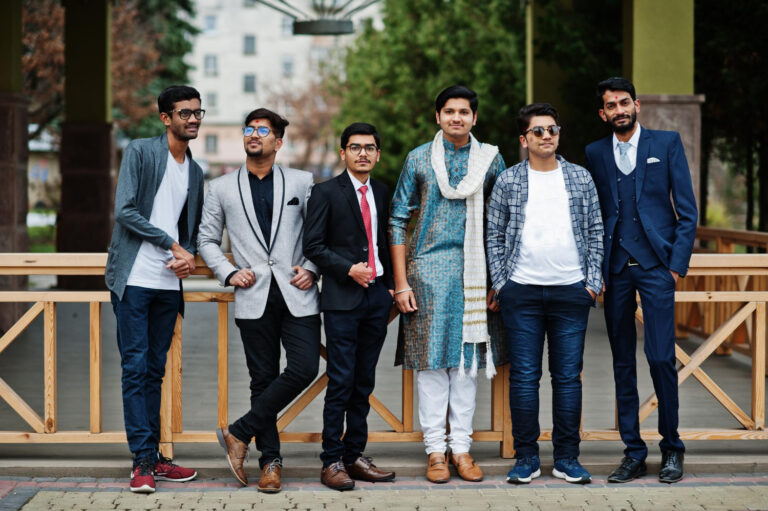Style-wise, many different types of Asian suits, clothing designs have been treated as inspired by how individuals can express themselves via their clothing. Some women might want their clothing to have more frills, laces, or ostentatious princess-like patterns. The world has amazing locations where people from the West wear clothes that are sometimes too different from what people in Asia suits.
Asian Style
Conversely, within the Asian style, the choices for attire and styles vary greatly depending on the individual and their preferences. While many Asian people continue to adhere to clothing styles such as salwar kameez, which are unquestionably niche trends in North America and Europe, you will also discover many who follow the fashion trends of the West.
Due to the absence of giant companies that control the market, clothing companies in Asia can produce clothing at low prices, allowing their variety of clothing patterns to expand significantly. It caused these clothing patterns, which are seen as obscene in Western societies, to rise in popularity.
Some Characteristics Of Asian Style Clothing:
Beautiful and Detailed Embroidery
The focus on intricate embroidery & ornamentation is another feature that sets Asian suits apart from their Western equivalents. Asian suits usually have hand-stitched embroidery, beading, and elaborate motifs, whereas Western suits tend to have simple lines & subtle designs. These adornments frequently have symbolic connotations in addition to being purely beautiful.
For example, geometric shapes may symbolise peace and equilibrium, while flowery patterns may symbolise wealth and joy. Gold and silver threads are frequently employed to create abundant and striking motifs in South Asian garments, such as lehengas or kurta pyjamas. Every suit is an artistic creation, showcasing the extraordinary talent and dedication of the craftspeople who created them.
Variability in Textures and Fabrics
Asian suits exhibit a remarkable variety of textiles and colours that represent the natural wealth and temperature of many locales. Asian suits provide an unmatched range of options, from the opulent silk used in Chinese Qipaos to the airy cotton and muslin materials favoured in Indian Kurtas. Conventional dyeing methods like Bandhani in India or Batik in Indonesia are frequently used further to improve the textures and weaving of Asian textiles.
Versatility and Adaptability
The adaptable nature of Asian clothes is acknowledged. Asian suits are made for a variety of events, in contrast to Western suits, which are mostly made for formal or business contexts. For instance, an elaborately embellished Sherwani is saved for festivals or weddings, whereas a basic Salwar Kameez is often worn every day for comfort.
Asian Suits’ Contribution to Heritage Preservation
Asian suits are important for maintaining their cultural heritage and being aesthetically pleasing. These customary clothes serve as an example of the extensive past and diversity of Asian cultures in a globe where Western design is becoming more and more prevalent. Individuals make sure that the artistry, legends, and customs surrounding Asian suits are preserved for upcoming generations by wearing and celebrating them.
Asian suits are frequently worn throughout weddings, festivals, and other significant cultural occasions, highlighting their importance in local society. They serve as a link between the past & the present, respecting ancestral customs while welcoming modern influences.
A Worldwide Impact on Contemporary Fashion
Asian suits have influenced international fashion despite their cultural roots. Asian clothing’s elaborate needlework, distinctive silhouettes, and vivid colours have served as a stimulus for designers all around the globe for decades. For example, contemporary haute couture collections frequently incorporate aspects of the kimono and cheongsam.
The combination of Asian and Western styles is another result of this widespread recognition. Suits today frequently integrate the elaborate ornamentation of Asian designs with the rigid fitting of Western clothing, resulting in a tasteful fusion of the two traditions.
Western Style
Due to the existence of these enormous companies which govern the market, people who remain in the Western half of the arena, such as those in Europe, have more limited options for their fashion choices. Distinctive clothing designs evolved into a gap in the global fashion industry. Depending on the season, many Europeans have a favourite colour for their clothing & are huge consumers of fashion magazines. Wearing clothing with colours which complement the season has grown into a human habit in the West. If you can walk along the street, you will notice it, particularly in London.
Their clothes might only be one hue, but they might be wearing amazing sunglasses with this colour. Westerners are known for their ability to judge good from wrong and for paying close attention to the hue of the season. People in London desire to wear anything to console themselves, but they can also maintain a well-groomed & orderly image. They have a stronger desire to follow the trends.
Conclusion
In contrast to Western suits, Asian suits are distinguished by their rich tradition, vivid colours, opulent fabrics, & intricate handiwork. Asian suits give an unrivalled sense of history, expression of culture, and creative intricacy, whilst Western suits are excellent at providing a sleek, disciplined style appropriate for professional work environments.
